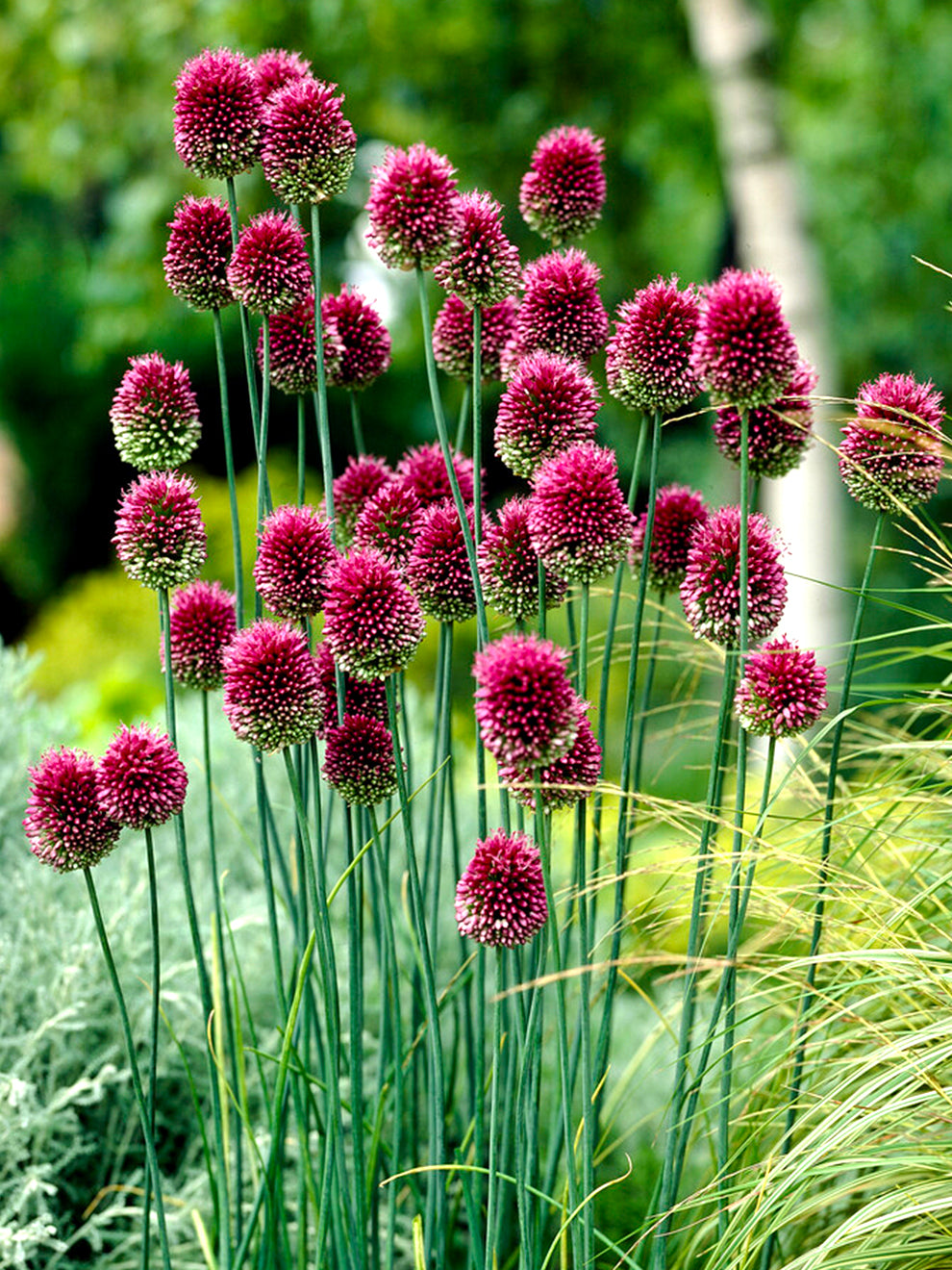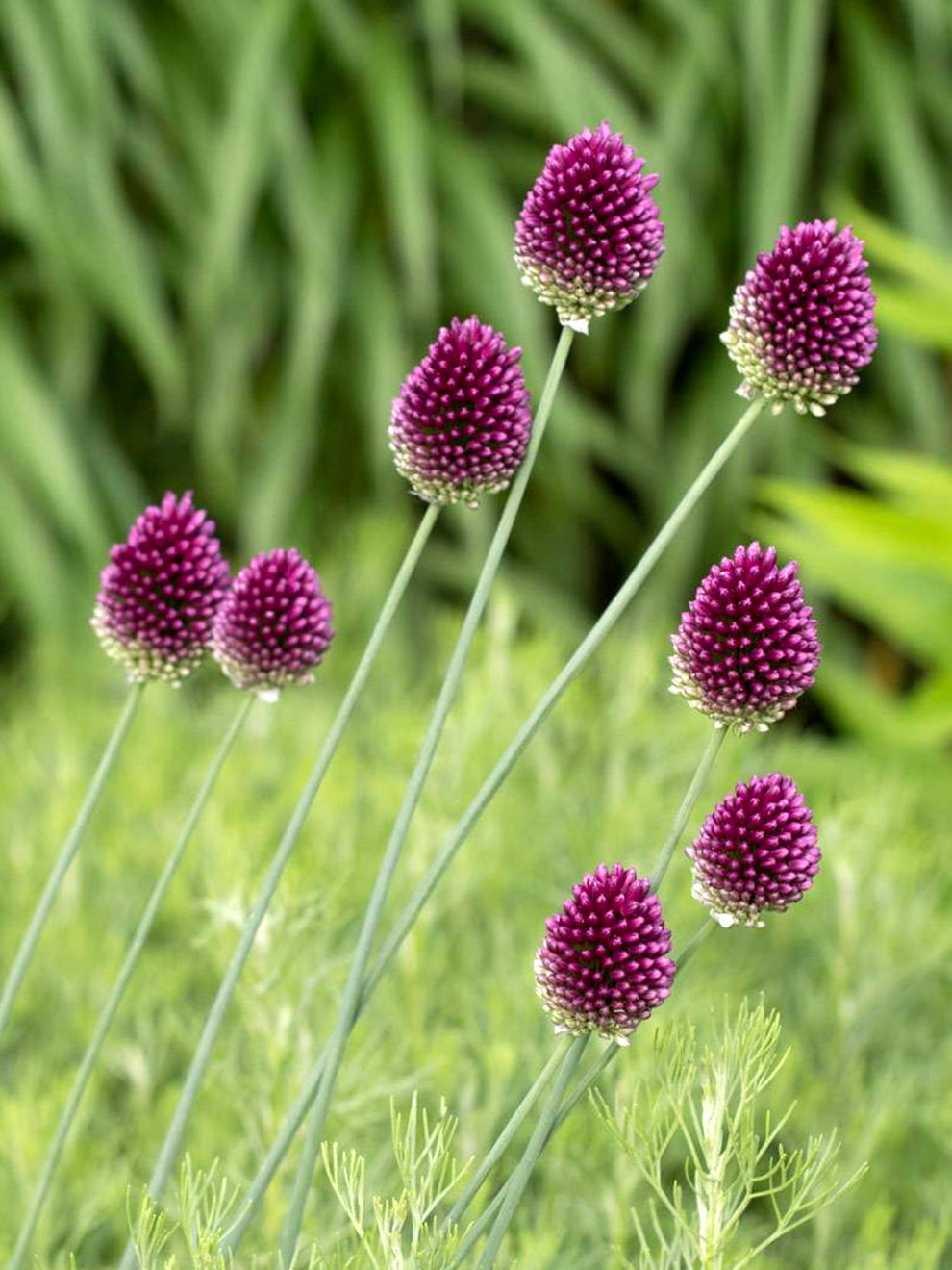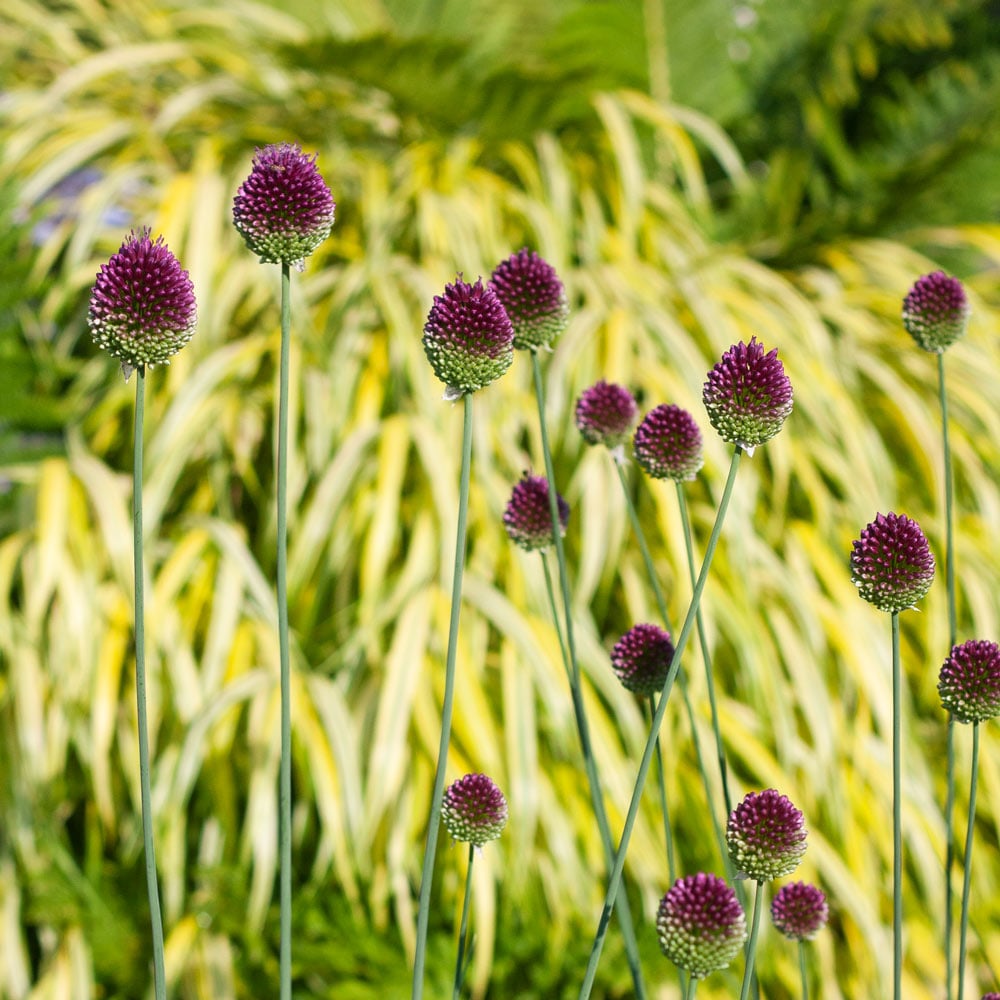Absolutely! Here’s a comprehensive article about Allium sphaerocephalon, incorporating the requested formatting:
Botanical Characteristics
Bulb and Leaves

The bulb of Allium sphaerocephalon is ovoid, typically 1.5 to 2.5 centimeters in diameter, and covered with brownish or grayish tunics. From this bulb, several linear, grass-like leaves emerge. These leaves are usually basal, meaning they originate from the base of the plant, and wither away before or during the flowering period, adding to the plant’s streamlined appearance during its bloom.
Inflorescence
The most striking feature of Allium sphaerocephalon is its inflorescence—the arrangement of flowers on the stem. The flowers are clustered into dense, globular umbels, which are responsible for the plant’s common names. These umbels, often referred to as “drumsticks,” are typically 2 to 3 centimeters in diameter and consist of numerous small, purplish-red to reddish-brown flowers. The color intensity can vary, with some individuals displaying deeper hues than others. Each flower has six tepals (petal-like segments) and six stamens that protrude slightly beyond the tepals, adding a delicate, fuzzy texture to the floral sphere.
Flowering Period
Fruits and Seeds
After flowering, the umbels develop into small, capsule-like fruits that contain black, angular seeds. These seeds are dispersed by wind or by animals, contributing to the plant’s natural propagation.
Ecological Role and Distribution

Natural Habitats
In its native range, the plant thrives in well-drained, sunny locations. It is often found in calcareous soils, indicating a preference for alkaline conditions. The species is relatively common in central and southern Europe, extending eastward to western Asia.
Pollination
The flowers of Allium sphaerocephalon are attractive to a variety of pollinators, including bees, butterflies, and moths. The dense clusters of flowers provide a rich source of nectar and pollen, supporting these insect populations. This makes the plant an important component of local ecosystems, contributing to biodiversity.
Naturalization
In some regions outside its native range, Allium sphaerocephalon has naturalized, meaning it has established self-sustaining populations. This is often observed in areas with similar climatic conditions and soil types.
Cultivation and Garden Uses

Planting and Propagation
The bulbs are typically planted in autumn, about 8 to 10 centimeters deep and spaced 10 to 15 centimeters apart. They prefer well-drained soil and a sunny location. Propagation can also be achieved by seed, although this method is slower and may take several years to produce flowering plants.
Soil and Light Requirements
Maintenance
This species is relatively low-maintenance. Once established, it requires minimal care. Deadheading (removing spent flower heads) can prevent self-seeding and encourage more vigorous growth. Division of bulbs every few years can also rejuvenate the plants and prevent overcrowding.
Garden Applications
Companion Plants
Companion plants that thrive in similar conditions and complement the appearance of Allium sphaerocephalon include:
Echinacea (coneflowers)
Uses and Cultural Significance
While primarily cultivated for ornamental purposes, Allium sphaerocephalon also has some minor uses and cultural significance.
Culinary Uses
Like other members of the Allium genus, Allium sphaerocephalon has edible parts. However, it is not as widely used in cooking as its relatives, such as onions or garlic. The bulbs and leaves can be consumed, but they are typically smaller and less flavorful.
Traditional Medicine
Some traditional medicinal practices have used various Allium species for their purported health benefits. However, specific medicinal uses of Allium sphaerocephalon are not well-documented.
Symbolism
In some cultures, Allium flowers, including Allium sphaerocephalon, symbolize unity, patience, and prosperity. Their spherical shape and dense flower clusters can be seen as representing completeness and harmony.
Challenges and Considerations
While generally robust, Allium sphaerocephalon can face certain challenges.
Pests and Diseases
Like other Allium species, it can be susceptible to pests such as onion flies and slugs. Fungal diseases like downy mildew can also affect the plant, particularly in damp conditions.
Self-Seeding
If deadheading is not practiced, Allium sphaerocephalon can self-seed prolifically, potentially leading to unwanted spread in the garden.
Toxicity
While edible in small quantities, consuming large amounts of Allium species can be toxic to pets, such as dogs and cats, due to the presence of organosulfur compounds.

